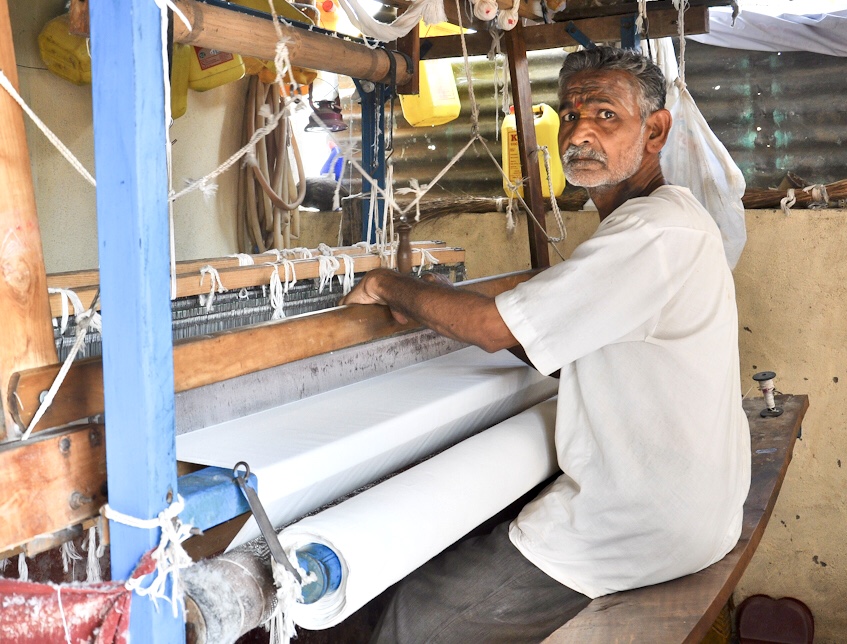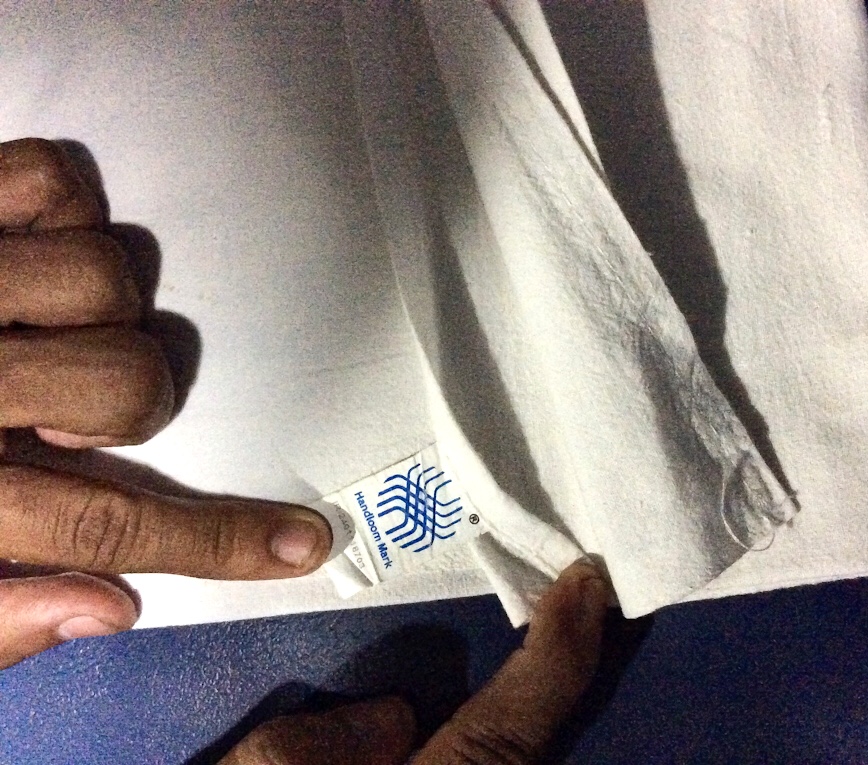Technology or Creativity
 July 22, 2023
July 22, 2023
 What’s wrong with these pictures? The last handloom weaver in a small Karnataka village weaves plain white yardage for school uniforms; a poly-cotton railway sheet proudly displays the handloom label.
What’s wrong with these pictures? The last handloom weaver in a small Karnataka village weaves plain white yardage for school uniforms; a poly-cotton railway sheet proudly displays the handloom label.
Technology is a basic element of making craft. But there is a debate about how much technology is ok. In some Khadi centers, yarn is spun on ambar charkhas and woven (mostly by women) on what are in reality human-powered power looms. The logic seems that as long as electricity is not used, weaving and spinning are hand work. This is pushing a technical point –and missing the essence.
The essence of hand craft is that it is made by an individual. So the first question is, how do we value that person? There is no inherent merit in pretending we don’t have access to advances in technology. (Who hand writes or calculates in their heads?) Today, as craft is livelihood in a market economy, artisans must calculate speed and time as well as quality. Advanced technology can enhance these facets. But if we value the essence of hand craft, the real question is, how much creative agency do artisans use, whether with hand tools or electrically powered tools? How are we investing in the artisan?
In Kutch -and elsewhere- there is a troubling trend of de-skilling and under-valuing traditional artisans. Individuals who can create intricate patterns with nearly unlimited possibilities in extra weft technique are instead weaving plain-weave undyed hand loom yardage. I question whether there is more value in this hand loom fabric than the same fabric woven on a power loom.
The value of human creativity is in the little details that bring a textile alive, in a glimpse of how the individual met a challenge and created something new.
One can use ancient technology without imagination- such as plain-weave hand loom yardage. One can also use new technology creatively by pushing its limits. The question for hand craft is who is master? Artisan, machine, or marketer?



